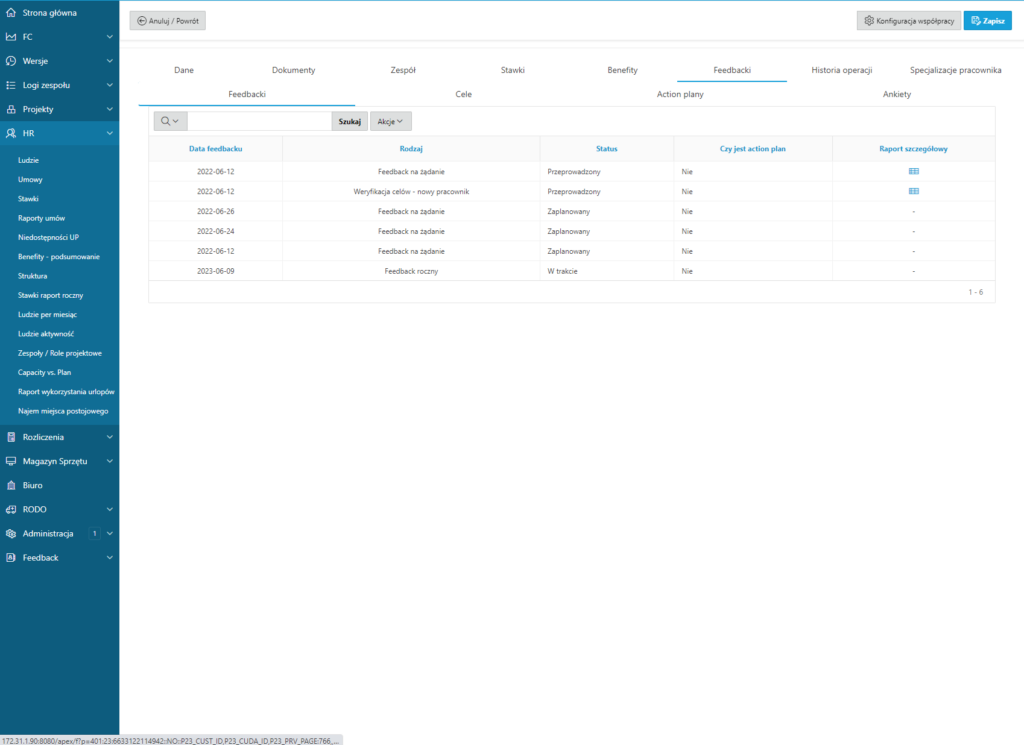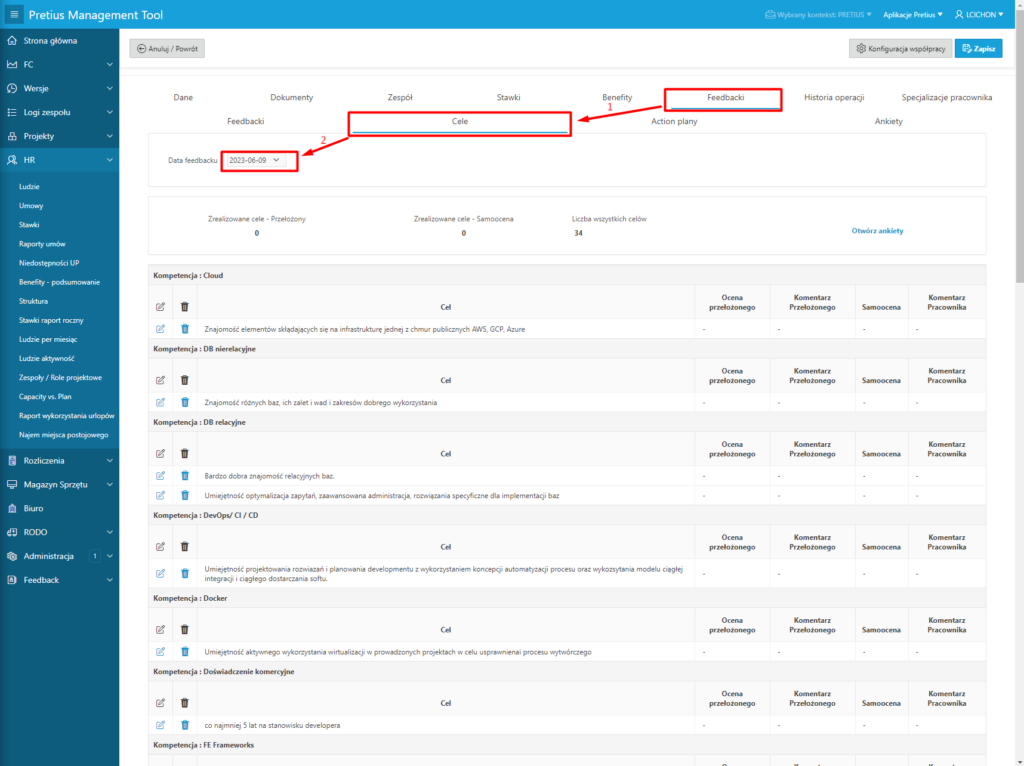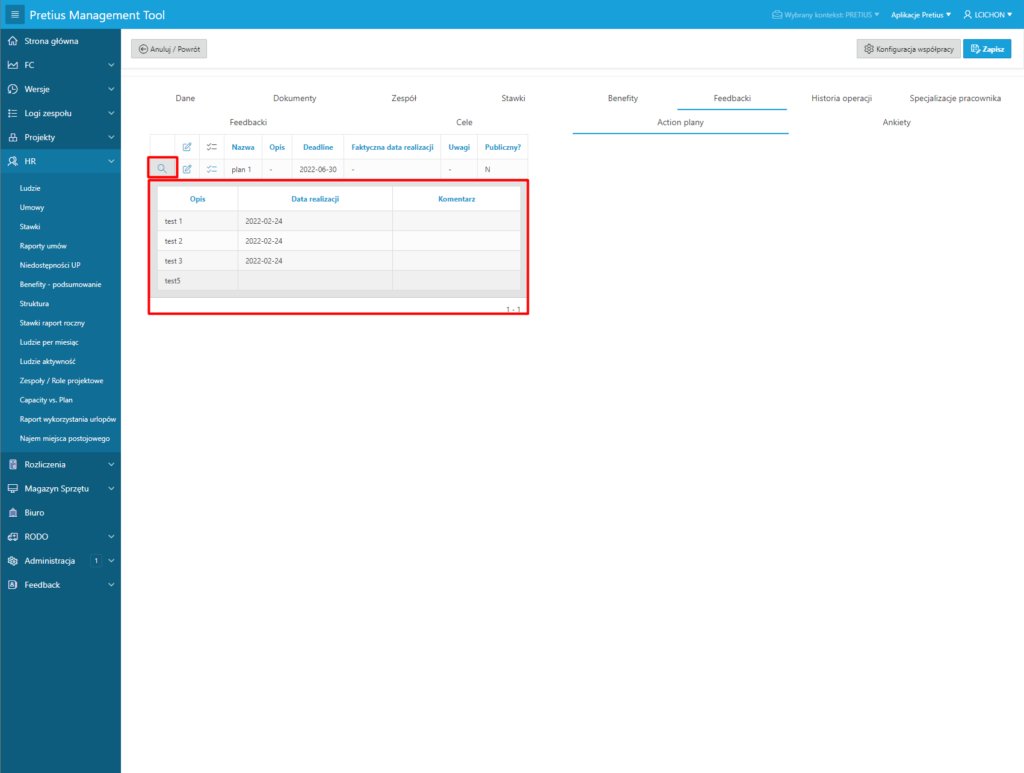Optimizing the feedback process is important for most companies, and essential for those that strive for the position of a market leader. Since you’re here, I guess you’re thinking about implementing some sort of employee feedback software at your company. And while you know that there are off-the-shelf products available, you get the feeling that they’re not tailored to your business model and to your feedbacking processes. Why not go for a custom solution then? Well, that’s exactly what we did – so, keep on reading to find out if it was worth it..
People are your company’s biggest and most important asset. Recognizing this simple fact is crucial in the current business climate. You simply can’t afford to lose the talented, passionate team members you’ve invested countless hours and dollars into. It’ll cost you your competitive edge, along with about 33% of lost employees’ salary – money you’ll need to pay to hire their replacement.
Employee-manager communication is vital in preventing this, with regular feedback meetings as the most essential tool. They give your people an outlet they can use to vent their frustrations and speak freely about their problems. Such conversations also allow you to set goals and expectations for the employee and provide you with valuable feedback you can use to improve various processes and operations.
Initially, the only thing you really need to carry out feedback meetings is a notebook with a calendar (along with something to write), but the bigger the company grows, the more challenging it becomes to schedule, control and remember everything. However, as with most business-related things, great software can help you alleviate these issues.
Some time ago, we came to the same conclusion here at Pretius, and since we’re a software development company, we decided to built a custom employee feedback solution.
The feedback process at Pretius
But first, let’s take a step back and look at how the feedback process works in our company – so you have proper context for later parts of the article.
The frequency of feedback meetings
The feedback meetings are most frequent just after hiring a new person. We always meet with them for the first time 1-2 weeks after they start working, and the second feedback meeting takes place after about a month – right in the middle of the employee’s trial period (usually 3 months). This is important because it means there is still time to fix any potential issues we noticed after these first weeks that could affect the final evaluation. It also smooths out the onboarding process, helping employees find their place in the company. Moreover, using mentoring software can streamline the feedback process and enhance the onboarding experience for new employees.
The third feedback meeting happens after about 10 weeks of work, and it’s even more important than the previous one – this is the time when we offer the person a final evaluation and decide if we want to continue working with them after the trial period. If the decision is positive and we hire them long-term, we immediately schedule the next feedback session, which should happen no later than 6 months into the future. These meetings continue regularly – sometimes once a quarter, sometimes once per 6 months. Conversations that take place at the end of the year are special however, because they’re accompanied by 360-degree feedback surveys.
Of course, it’s worth pointing out that employees who encounter problems don’t need to wait months for the next feedback meeting to disclose them – in fact, we always encourage them to speak up whenever they need to. The yearly reviews specified above are often accompanied by on-demand feedback meetings.
The goals of the feedback process
The goals of our feedback process don’t differ substantially from those you know from most other companies. They’re as follows:
- Improving company culture – we want our employees to feel good in the workplace, so we use feedback meetings to make sure that we talk with them on a regular basis (which is especially important in the post-pandemic reality of remote work), identify issues and problems that may affect them
- Empowerment – positive feedback and acknowledgment of successes can go a long way in a manager-employee relationship and has a serious impact on employee satisfaction and engagement
- Facilitating growth – feedback is a great occasion to provide people with information they need to grow, details about skills they may lack, areas that need improvement, and to set some goals for the future
- Defining expectations – business relationships work best when terms and expectations are clearly defined (not only money-wise; think about personal development plans, measurable goals, etc.), and the feedback meeting is the time and place to do this
The possible issues
Pretius currently hires over 200 people, and these employees are divided into several teams, usually a few dozen strong, led by Delivery Managers. These teams are often subsequently divided into smaller groups that work on particular projects, and each project has a Project Manager assigned. However, some people and positions overlap between the project teams.
The structure described above works for us very well, but as you can probably imagine, it may make the feedback process a bit of a nightmare. Several reasons for that:
- Different people have to be present in different feedback meetings
- All of these people need access to relevant information
- Most of these conversations require the Delivery Manager’s presence
- Organizing, managing, and leading feedback meetings takes a lot of time
Feedbacker – our employee feedback platform
We’ve taken a long look at the abovementioned issues and decided some of them could be alleviated – if not fixed entirely – by implementing a custom, centralized feedback system. We opted for a web application based on the Oracle APEX low-code platform, since it offered everything we needed along with great time-to-market.
The off-the-shelf dilemma
One question you might be asking right about now is: why didn’t you simply use an off-the-shelf product?
We’re aware there are many solutions like that on the market, such as 15Five, CultureMonkey and others, but we had reasons to create our own. The main one was that we wanted our system to be unified with other elements of our IT infrastructure instead of existing outside of it. We needed a specific list of integrations – with tools like Jira, Confluence, Google Calendar and Google Meet but also with our custom, in-house systems – and ready-made products tended to offer either too much or less than required or focus on a specific aspect of the feedback process, like surveys.
Moreover, we’re a software company with extensive custom software development and low-code development experience, so we knew we could create the solution we needed quickly and without too many problems.
Pretius Feedbacker features
The solution we’ve created offers several important features. Most of them are actually quite basic but nonetheless very useful.
Feedback meetings management
The managers can use the Feedbacker tool – which is available through our main HR app, also used for absence management, etc. – to set feedback meetings up and provide a date for them. They can also set the status of these meetings (“planned” or “done”), and specify their nature (for example, “yearly feedback”, “feedback with a new employee”, “on-demand”, etc.).
Centralized access to feedback information
Feedbacker offers centralized access to information regarding a given employee’s performance to every concerned party, which means both the employee and their manager, team leader, etc.
As a manager, you can access reports from previous feedbacks, goals, and so on. The system allows you to access the entire feedback history. You can also freely modify goals – of course, that only applies to the current ones. You can’t change those evaluated during a previous feedback meeting.
Access management
Different users are assigned different access levels depending on their position, thanks to which no one will see information that they shouldn’t see. We’ve got quite a bit of experience with creating secure systems and employing popular single sign-on solutions such as Keycloak.
Goal setting and evaluation
The system allows us to set short-term and long-term goals for every employee. In the case of new people, these goals are defined individually, using experience with people in similar positions as a basis. When an employee ends the trial period, you can start assigning them default goals automatically – just choose a position (e.g., “Software Tester”) and Feedbacker comes up with a list of pre-definied goals. Of course, you can customize the goals later on but having such a list helps a lot.
Both managers and employees can look at these goals and evaluate them before a feedback meeting, decide whether they were met, and make notes about the performance, conditions, etc. It helps them prepare for the conversation so that both sides get as much out of it as possible.
Action plans
The “Action plans” tab allows you to set up additional, specific tasks to be carried out by the employee – for example, getting a certificate, learning a language, etc. These can be either public (visible to both the manager and the emplyee), or nonpublic (visible only to the manager). All such tasks assigned for a given person are summarized in a table.
Once created, you can delete the plan and edit it however you like – however, only as long as the action plan is set as “Unfinished”. Once you review it, specify the completion date (it may differ from the deadline), and set it to “Finished”, it can’t be changed.
Customizable dictionary
The Pretius Feedbacker has a fully editable dictionary, which means it can be customized to the needs of various industries and specific companies. For example, it’s possible to create pre-defined lists of goals for typical roles in the company, as mentioned previously.
A suite of integrations
Our Feedbacker is integrated with several tools we use in our daily work, such as Atlassian Jira and Confluence, Google Forms, Google Calendar and Google Meet. Other integrations are possible.
Surveys
We can also use the feedback system to generate and send various employee feedback surveys – 360-degree feedback, pulse surveys, or any other. You can choose a survey from a number of templates, specify a list of people who should receive it, and then send it to these peoples’ work emails by clicking a button right there in Feedbacker. This feature is based on the Google Forms integration.
Notes
Managers can also leave notes in the system about a given employee. These are invisible to the person in question.
Business advantages
Thanks to the above-mentioned features, our custom employee feedback tool provides several business benefits. Let’s summarize them briefly:
- Well-organized feedback process – good software allows you to optimize the feedback process and help you maintain the expected regularity, which, in turn, can boost employee engagement
- Saved time – simplified organization and access to key data in one place saves time which you can relegate to other important activities
- Specific feature set – different industries and companies can have slightly different HR and feedbacking needs. A system created just for you can met specific requirements better than a ready-made tool
- Improved security – a centralized employee feedback system is more secure than hundreds of Google documents and Excel forms maintained by different people. And we all know that keeping private information safe is incredibly important in the age of GDPR/CCPA and similar legal acts
- Cost-effectiveness – many off-the-shelf employee feedback products are offered in the SaaS model, which means that you need to pay a monthly (or yearly) subscription fee. Therefore, while developing a custom system might seem like an expensive solution at first, in the long term it often generates less costs. Especially, when the development itself is based on a semi-ready solution (like our own Feedbacker) and a short-time-to-market, low-code technology like Oracle APEX
Conclusion
The right employee feedback tool can be of great help to the company – it simplifies the entire feedback process and helps you structure it in the most advantageous way. Off-the-shelf tools might provide you with what you need, but in many cases the best option is to design a custom solution tailored to your company’s specific needs.
If you’re interested in a solution similar to Feedbacker, reach out to us at hello@pretius.com or use the contact form below. Initial consultations at Pretius are always free. We’ll be happy to talk about your expectations, share our experiences, and showcase Feedbacker, so you can see how it works live.
Employee feedback software FAQ
Here are answers to some questions regarding employee feedback tools.
How to gather employee feedback?
You can collect employee feedback in various forms – the easiest way is to use pen and paper, but if you want to optimize the process, employee feedback software is a good investment.
How to create surveys for feedback?
Different tools offer different possibilities. For example, some platforms offer a range of templates you can use to gather various information – employee engagement surveys, anonymous feedback surveys, forms to measure job satisfaction, employee recognition, employee sentiment, etc.
Why gather feedback and do performance reviews?
Feedback meetings and performance reviews help both managers and employees realize goals, grow and understand each other well.


